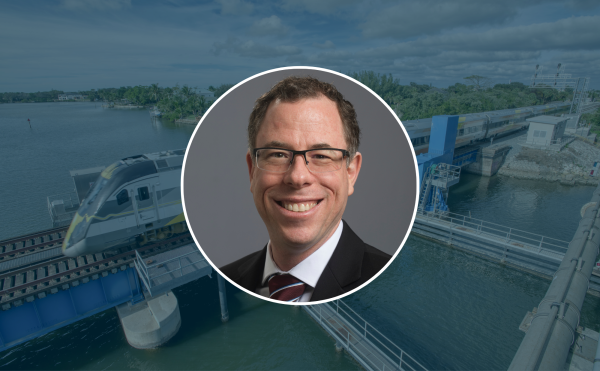By: Steve Shaup, Lead Bridge Engineer, TranSystems
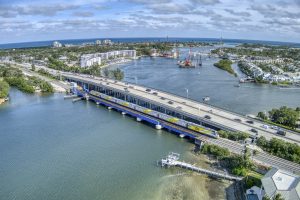
The replacement of the Loxahatchee River Movable Bridge illustrates that infrastructure is more than just meeting design specifications—it’s about adapting, innovating, and embracing change to achieve success.
Located in Jupiter, Florida, this 100-year-old railroad bridge posed unique challenges that required a shift in approach from rehabilitation to complete reconstruction to allow for the bridge’s use for Brightline’s passenger rail service.
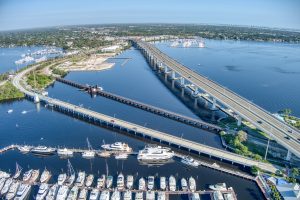
Adapting to New Realities: The Story Behind the Project
When Brightline first envisioned this project, the goal was simple: rehabilitate the existing Loxahatchee River Bridge to extend its service life. In 2014, TranSystems was selected to inspect the bridge and recommend repairs. Brightline incorporated the recommendations in its original construction budget and worked closely with TranSystems and Florida East Coast Railway (FECR) to plan the necessary rehabilitation. Three years later, after a design hold was lifted, our team discovered significant deterioration had occurred since the original inspection. Following a comprehensive reassessment, TranSystems recommended replacing the entire bridge superstructure.
A New Approach: Designing for Complexity
Recognizing the urgency of the situation, TranSystems immediately began developing plans for a complete bridge replacement. Our team took on the role of designer for both the fixed and movable spans, addressing structural, mechanical, and electrical systems. Flexibility became a key asset in meeting the evolving project needs.
“Demonstrating the nimbleness of TranSystems’ design team, they prioritized design efforts based on the delivery schedule, focusing on long-lead elements like structural steel girders and major mechanical components to allow Brightline early procurement,” said Scott Gammon, Senior Vice President for Brightline.
This strategic focus helped to compress the construction timeline, ensuring that work could move forward without delays. Brightline also requested revisions to one approach span, transforming it into a Small Boat Span with higher overhead clearance to improve navigation for local mariners. TranSystems revised the design to provide relief for boaters while still meeting the demands of the railway system.
Flexibility in Design: Overcoming Challenges
As work progressed, another significant change emerged. Brightline and FECR decided to replace the bridge’s foundations and substructure. TranSystems was tasked with redesigning the bridge supports and girders to accommodate these new conditions. Adding to the complexity, the steel girders for the original design had already been fabricated and paid for. The project team worked to minimize changes to the pre-purchased girders by creatively reusing the structural steel, ensuring that no wasted materials would affect the project’s financial standing.
As Gammon noted, “The design team demonstrated the utmost respect for Brightline’s budget by incorporating a redesign which reused all the pre-purchased and fabricated structural steel. In one last show of their flexibility, TranSystems was literally redesigning specific foundations in hours when atypical pile-driving results were encountered during construction.”
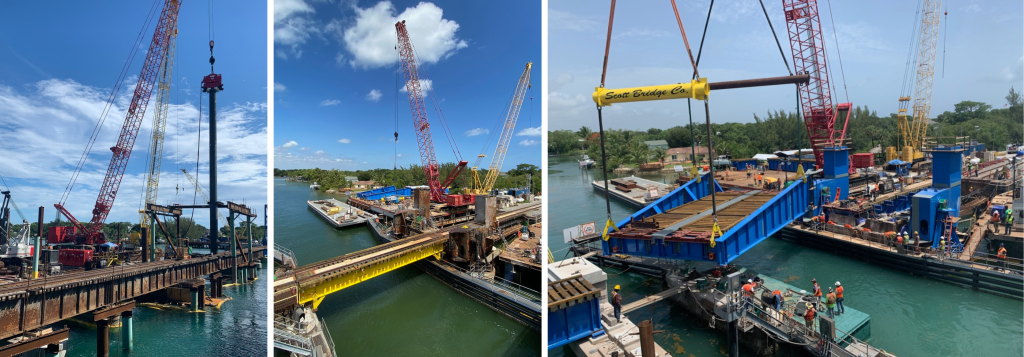
Enhanced Capacity and Navigation
The project’s outcome restored the bridge to double-track operation, increasing capacity to accommodate Brightline’s high-speed passenger rail service. These upgrades have significantly improved reliability and operational efficiency for both trains and local mariners. Boaters now benefit from increased overhead clearance and improved bridge operations, reducing disruptions to their navigation.

A Partnership of Trust and Collaboration
Over the course of our 10-year relationship with Brightline, TranSystems has built a foundation of trust and partnership. This project underscored the importance of long-term collaboration and open communication.
“Brightline could not be more pleased with the ten-year relationship we have forged with the Consultant. Their consistent demonstration of true partnership, flexibility, and responsiveness were vital to the success of this project,” said Gammon.
The success of the Loxahatchee River Bridge replacement is a testament to the dedication and skill of project teams coming together to solve complex and evolving issues.
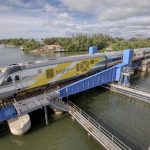
Award-Winning Safety and Excellence
The Loxahatchee River Bridge replacement was honored with the ENR Southeast Award of Merit for Excellence in Safety, as part of Brightline’s Florida Higher-Speed Rail initiative. In addition, it received the American Council of Engineering Companies (ACEC) 2024 National Recognition Award, further acknowledging the innovative engineering solutions and technical expertise that defined the project. These accolades highlight an unwavering commitment to delivering safe, high-quality infrastructure that benefits both the client and the broader community.
Looking Ahead
The recent merger between Gannett Fleming and TranSystems opens new avenues to bring our combined expertise to even more transformative projects. Together, Gannett Fleming and TranSystems are poised to tackle the infrastructure challenges of tomorrow with enhanced capabilities and a unified vision.
